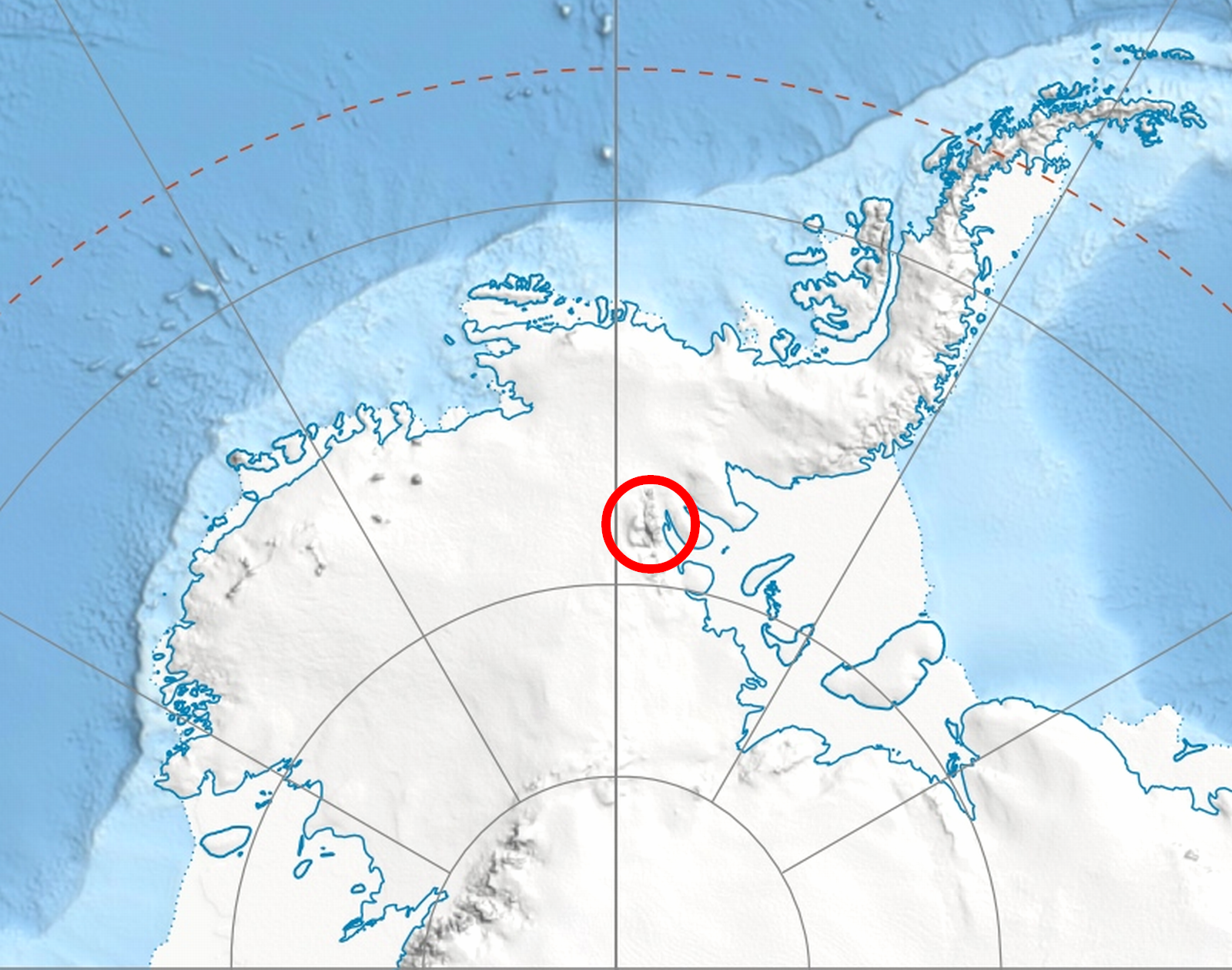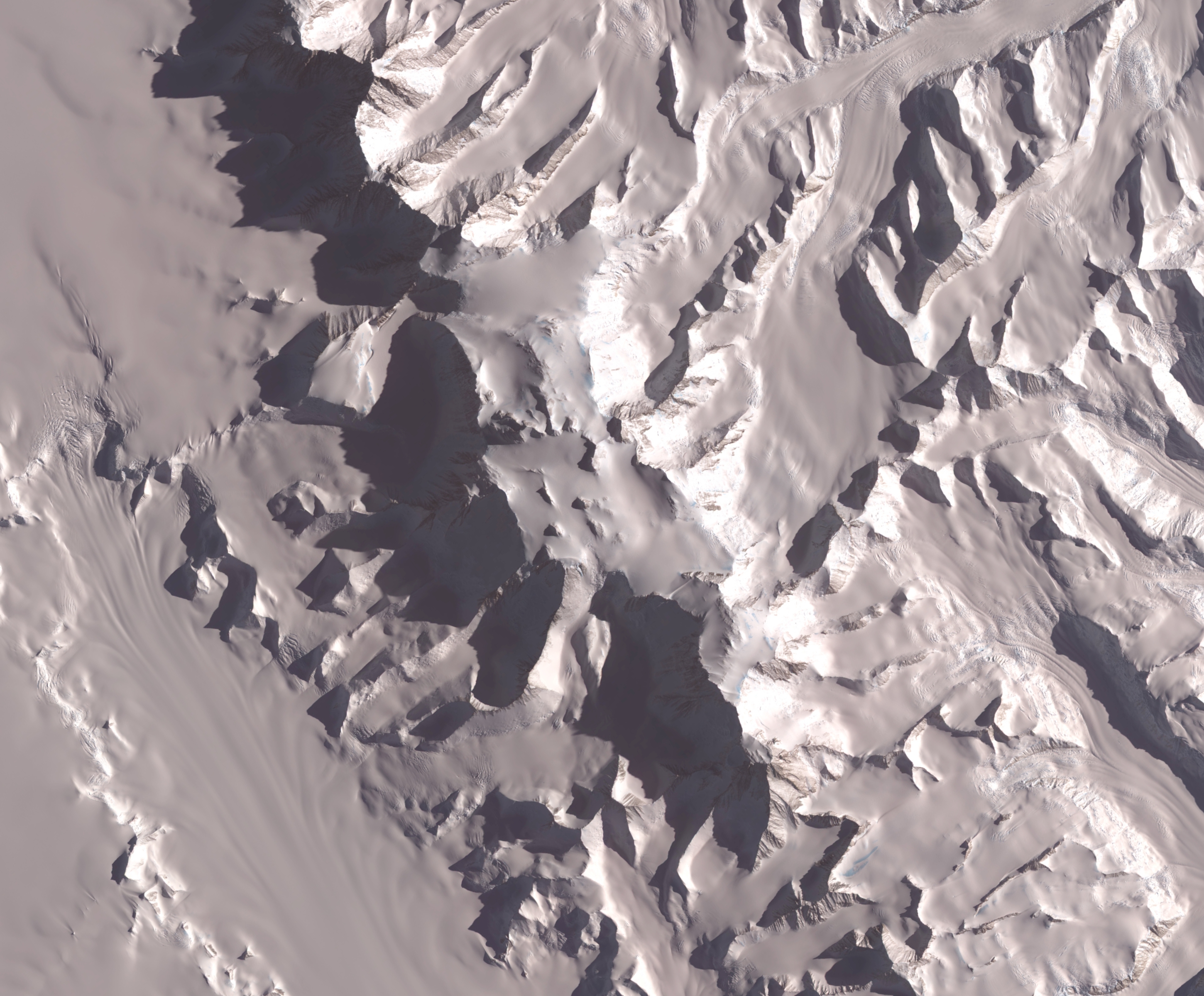|
Corbet Peak
Corbet Peak is a peak, at the north edge of the ice-covered Vinson Plateau in the Sentinel Range of the Ellsworth Mountains, Antarctica. It surmounts Hinkley Glacier to the northeast and the head of Roché Glacier to the southwest. The peak was named by US-ACAN in 2006 after Barry Corbet (1936-2004), member of the 1966–67 American Antarctic Mountaineering Expedition that made the first ascent of Mount Vinson Vinson Massif () is a large mountain massif in Antarctica that is long and wide and lies within the Sentinel Range of the Ellsworth Mountains. It overlooks the Ronne Ice Shelf near the base of the Antarctic Peninsula. The massif is located a ..., the summit of Antarctica, and other high mountains in the Sentinel Range. Location Corbet Peak is located at , which is east of Mount Vinson. US mapping in 1961, updated in 1988. Maps Vinson Massif. Scale 1:250 000 topographic map. Reston, Virginia: US Geological Survey, 1988. * D. Gildea and C. Rada. Vinson Massif ... [...More Info...] [...Related Items...] OR: [Wikipedia] [Google] [Baidu] |
Vinson Plateau
Vinson Plateau is the summit plateau of Vinson Massif, Sentinel Range in Ellsworth Mountains, Antarctica. It extends for 9 km between Goodge Col and Hammer Col linking it to the north-central part of Sentinel Range to the north-northwest and to Craddock Massif to the south-southeast respectively, and 4.5 km wide between Branscomb Peak and Silverstein Peak to the west and Schoening Peak and Marts Peak to the east. Elevation from 4000 m to 4600 m above sea level. Rising from the plateau is the summit of Antarctica Mount Vinson (4892 m), and several other peaks higher than 4700 m, albeit of modest prominence: Clinch Peak (4841 m), Corbet Peak (4822 m), Silverstein Peak (4790 m), Schoening Peak (4743 m) and Hollister Peak (Antarctica), Hollister Peak (4729 m). The lower peaks of Fukushima Peak, Fukushima (4634 m) and Opalchenie Peak, Opalchenie (4500 m) stand at the south extremity of the plateau. Its central part is drained by Roché Glacier and a tributary glacier in J ... [...More Info...] [...Related Items...] OR: [Wikipedia] [Google] [Baidu] |
Sentinel Range
The Sentinel Range is a major mountain range situated northward of Minnesota Glacier and forming the northern half of the Ellsworth Mountains in Antarctica. The range trends NNW-SSE for about and is wide. Many peaks rise over and Vinson Massif (4892 m) in the southern part of the range is the highest elevation on the continent.Sentinel Range. SCAR Composite Antarctic Gazetteer. Sentinel Range comprises a main ridge (featuring Vinson Massif in its southern portion) and a number of distinct heights, ridges and mountains on its east side, including (south to north) Owen Ridge, Petvar Heights, [...More Info...] [...Related Items...] OR: [Wikipedia] [Google] [Baidu] |
Ellsworth Mountains
The Ellsworth Mountains are the highest mountain ranges in Antarctica, forming a long and wide chain of mountains in a north to south configuration on the western margin of the Ronne Ice Shelf in Marie Byrd Land. They are bisected by Minnesota Glacier to form the Sentinel Range to the north and the Heritage Range to the south. The former is by far the higher and more spectacular with Mount Vinson () constituting the highest point on the continent.Bockheim, J.G., Schaefer, C.E., 2015. ''Soils of Ellsworth Land, the Ellsworth Mountains''. In: Bockheim, J.G. (Ed.), ''The Soils of Antarctica. World Soils Book Series'', Springer, Switzerland, pp. 169–181. The mountains are located within the Chilean Antarctic territorial claim but outside of the Argentinian and British ones. Discovery The mountains were discovered on November 23, 1935, by the American explorer Lincoln Ellsworth in the course of a trans-Antarctic flight from Dundee Island to the Ross Ice Shelf. He gave the ... [...More Info...] [...Related Items...] OR: [Wikipedia] [Google] [Baidu] |
Antarctica
Antarctica () is Earth's southernmost and least-populated continent. Situated almost entirely south of the Antarctic Circle and surrounded by the Southern Ocean (also known as the Antarctic Ocean), it contains the geographic South Pole. Antarctica is the fifth-largest continent, being about 40% larger than Europe, and has an area of . Most of Antarctica is covered by the Antarctic ice sheet, with an average thickness of . Antarctica is, on average, the coldest, driest, and windiest of the continents, and it has the highest average elevation. It is mainly a polar desert, with annual Climate of Antarctica#Precipitation, precipitation of over along the coast and far less inland. About 70% of the world's freshwater reserves are frozen in Antarctica, which, if melted, would raise global sea levels by almost . Antarctica holds the record for the Lowest temperature recorded on Earth, lowest measured temperature on Earth, . The coastal regions can reach temperatures over in the ... [...More Info...] [...Related Items...] OR: [Wikipedia] [Google] [Baidu] |
Hinkley Glacier
Hinkley Glacier () is a glacier flowing northeastward from Corbet Peak and Schoening Peak, Vinson Massif on the east slope of Sentinel Range in the Ellsworth Mountains, Antarctica, and continuing between Mount Segers and Zinsmeister Ridge to enter Dater Glacier southeast of Nebeska Peak and northwest of Sipey Bluff. It was named by US-ACAN (2006) after Todd K. Hinkley, Technical Director, National Ice Core Laboratory, U.S. Geological Survey, Denver, CO, 2001-06. See also * List of glaciers in the Antarctic * Glaciology Maps Vinson Massif. Scale 1:250 000 topographic map. Reston, Virginia: US Geological Survey, 1988. Antarctic Digital Database (ADD).Scale 1:250000 topographic map of Antarctica. Scientific Committee on Antarctic Research (SCAR). Since 1993, regularly updated. References * External links Hinkley GlacierSCAR A scar (or scar tissue) is an area of fibrosis, fibrous tissue that replaces normal skin after an injury. Scars result from the biological p ... [...More Info...] [...Related Items...] OR: [Wikipedia] [Google] [Baidu] |
Roché Glacier
Roché Glacier (, ) is the 5.8 km long and 2 km wide glacier draining the central part of Vinson Plateau in Sentinel Range, Ellsworth Mountains in Antarctica. Its head is bounded by Mount Vinson to the north, Corbet Peak and Clinch Peak to the east, Wahlstrom Peak to the southeast, and Hollister Peak to the south, with the glacier flowing westwards and descending steeply north of Silverstein Peak to join Branscomb Glacier. The glacier is named after the British pioneer of Antarctica Anthony de la Roché who discovered the first land in the Antarctic region ( Roché Island, present South Georgia) in 1675. Location Roché Glacier is centred at . US mapping in 1961, 1988 and 2007. See also * List of glaciers in the Antarctic * Glaciology Maps Vinson Massif. Scale 1:250 000 topographic map. Reston, Virginia: US Geological Survey, 1988. * D. Gildea and C. Rada. Vinson Massif and the Sentinel Range. Scale 1:50 000 topographic map. Omega Foundation, 2007. Antar ... [...More Info...] [...Related Items...] OR: [Wikipedia] [Google] [Baidu] |
US-ACAN
The Advisory Committee on Antarctic Names (ACAN or US-ACAN) is an advisory committee of the United States Board on Geographic Names responsible for recommending commemorative names for features in Antarctica. History The committee was established in 1943 as the Special Committee on Antarctic Names (SCAN). It became the Advisory Committee on Antarctic Names in 1947. Fred G. Alberts was Secretary of the Committee from 1949 to 1980. By 1959, a structured nomenclature was reached, allowing for further exploration, structured mapping of the region and a unique naming system. A 1990 ACAN gazeeter of Antarctica listed 16,000 names. Description The United States does not recognise territorial boundaries within Antarctica, so ACAN assigns names to features anywhere within the continent, in consultation with other national nomenclature bodies where appropriate, as defined by the Antarctic Treaty System. The research and staff support for the ACAN is provided by the United States Geologica ... [...More Info...] [...Related Items...] OR: [Wikipedia] [Google] [Baidu] |
Barry Corbet
Barry Corbet (August 1, 1936 – December 18, 2004) was a Canadian-American mountaineer, film-maker and author. He was a member of the 1963 American Mount Everest West Ridge Expedition, which was the first U.S. Team to climb Mount Everest. Corbet produced or co-produced more than 100 films, and he was also the editor of '' New Mobility'', a magazine on disability culture and lifestyle. He wrote extensively on disability related issues. His book, Options: Spinal Cord Injury and the Future, was published in 1980. Corbet was born on August 1, 1936, in Vancouver, British Columbia. He dropped out of Dartmouth College and moved to Wyoming to pursue his love of skiing and mountaineering. Corbet passed away on December 18, 2004, which was far later than medics had predicted after a helicopter crash in 1968 which left paralyzed from the waist down. Places and events named after him *Corbet Peak is a peak, at the north edge of the ice-covered Vinson Plateau in the Sentinel Range of the ... [...More Info...] [...Related Items...] OR: [Wikipedia] [Google] [Baidu] |
Mount Vinson
Vinson Massif () is a large mountain massif in Antarctica that is long and wide and lies within the Sentinel Range of the Ellsworth Mountains. It overlooks the Ronne Ice Shelf near the base of the Antarctic Peninsula. The massif is located about from the South Pole. Vinson Massif was discovered in January 1958 by U.S. Navy aircraft. In 1961, the Vinson Massif was named by the Advisory Committee on Antarctic Names (US-ACAN), after Carl G. Vinson, United States congressman from the state of Georgia, for his support for Antarctic exploration. On 1 November 2006, US-ACAN declared Mount Vinson and Vinson Massif to be separate entities.Stewart, J. (2011) ''Antarctic An Encyclopedia'' McFarland & Company Inc, New York. 1776 pp. . Vinson Massif lies within the unrecognised Chilean claim under the Antarctic Treaty System. Mount Vinson is the highest peak in Antarctica, at . It lies in the north part of Vinson Massif's summit plateau in the south portion of the main ridge of the ... [...More Info...] [...Related Items...] OR: [Wikipedia] [Google] [Baidu] |
Mountains Of Ellsworth Land
A mountain is an elevated portion of the Earth's crust, generally with steep sides that show significant exposed bedrock. Although definitions vary, a mountain may differ from a plateau in having a limited summit area, and is usually higher than a hill, typically rising at least above the surrounding land. A few mountains are isolated summits, but most occur in mountain ranges. Mountains are formed through tectonic forces, erosion, or volcanism, which act on time scales of up to tens of millions of years. Once mountain building ceases, mountains are slowly leveled through the action of weathering, through slumping and other forms of mass wasting, as well as through erosion by rivers and glaciers. High elevations on mountains produce colder climates than at sea level at similar latitude. These colder climates strongly affect the ecosystems of mountains: different elevations have different plants and animals. Because of the less hospitable terrain and climate, mountains t ... [...More Info...] [...Related Items...] OR: [Wikipedia] [Google] [Baidu] |




